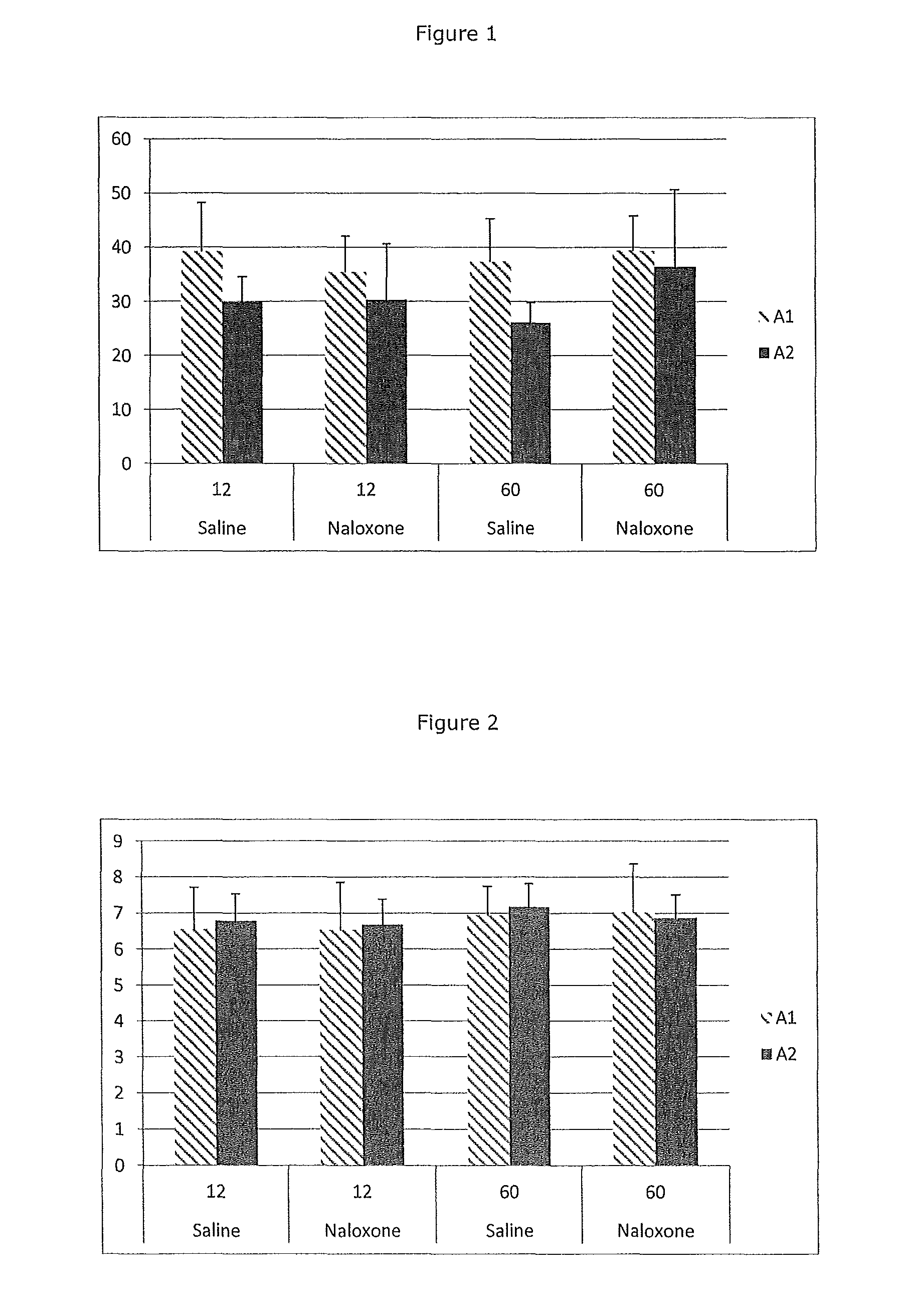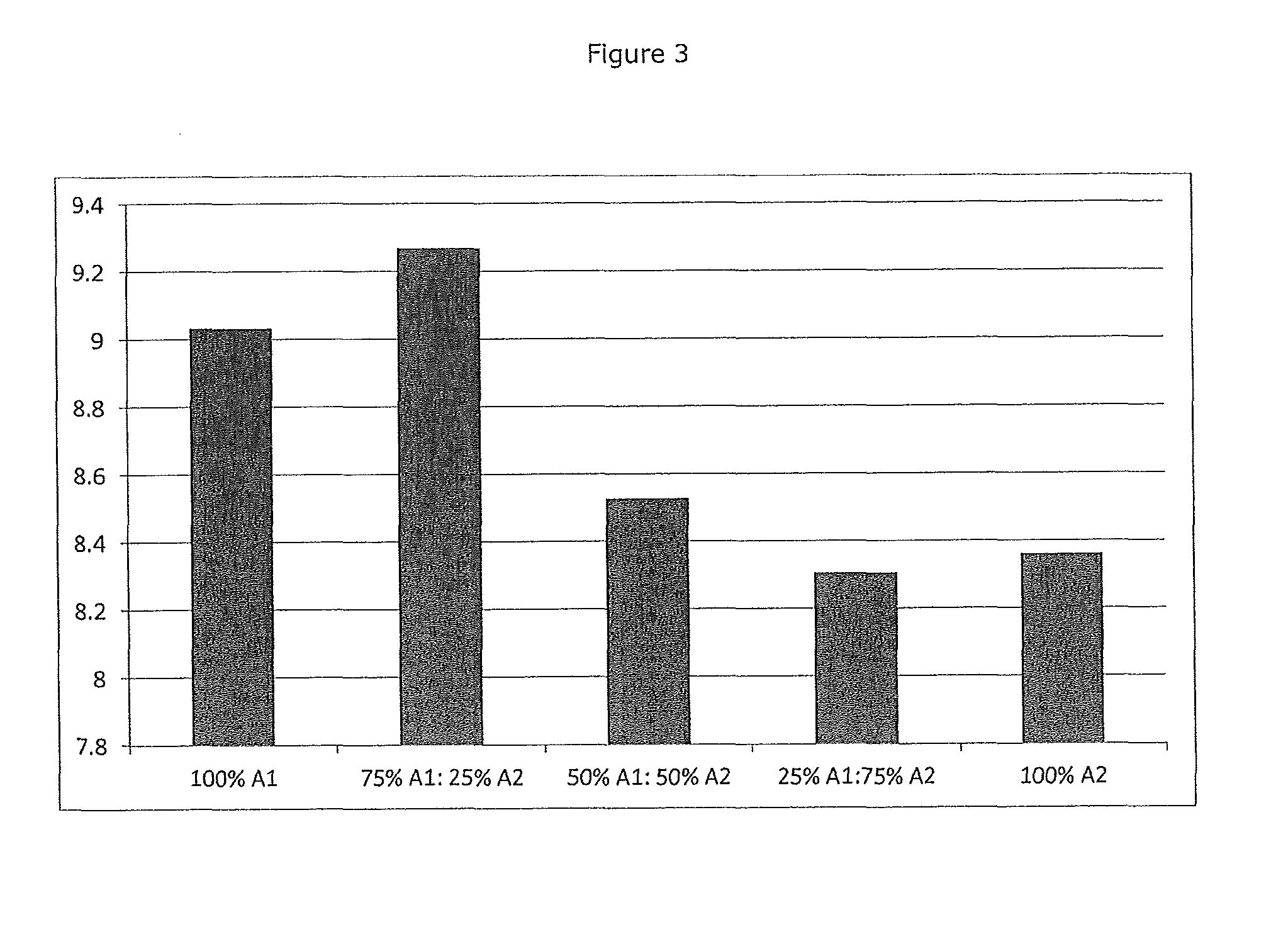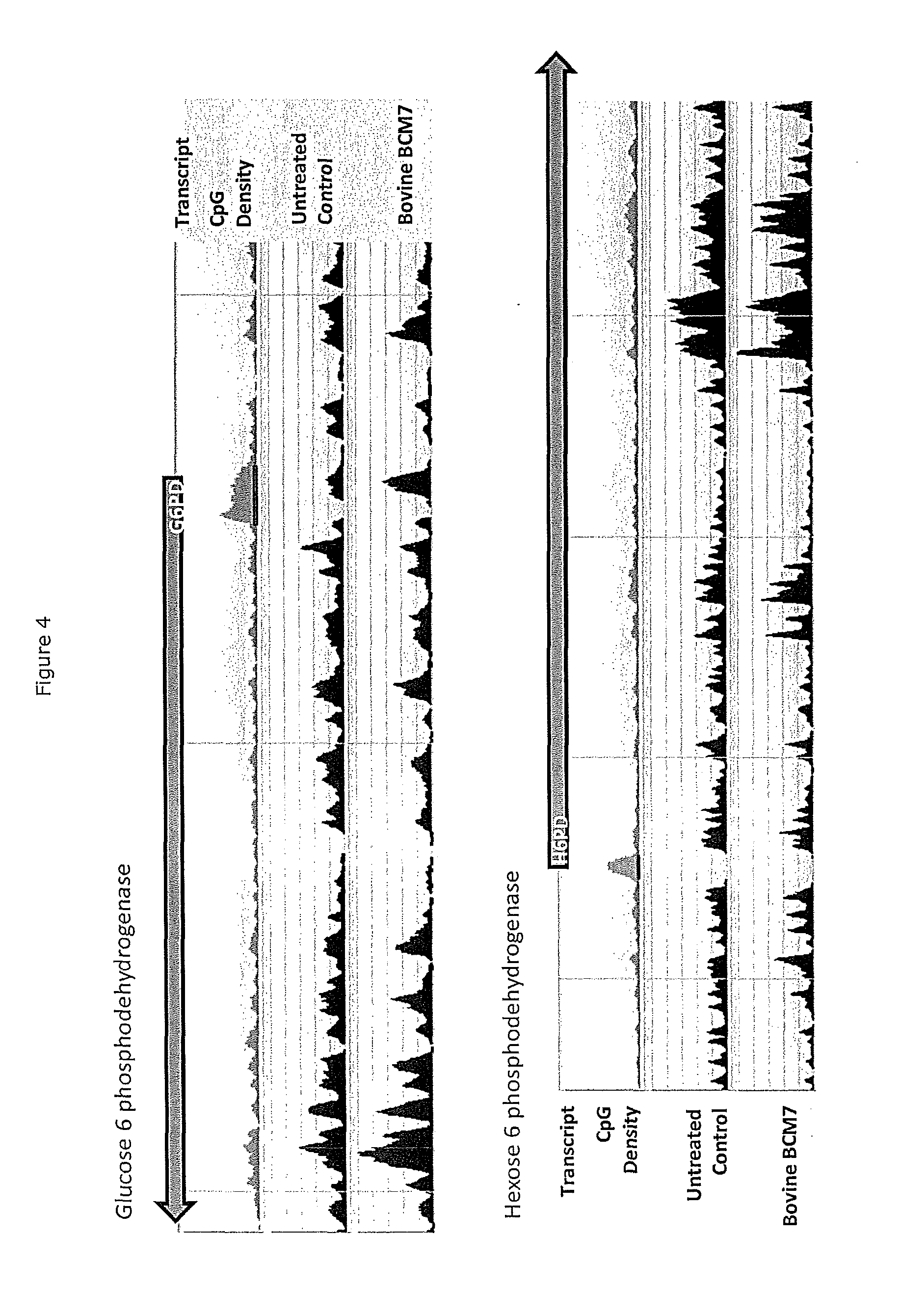Beta-casein a2 and blood glucose levels
a technology of beta-casein and blood glucose, which is applied in the field of milk protein beta-casein a2, can solve the problems of high blood glucose levels, low levels of variants, and no variation, and achieve the effects of preventing or treating obesity, avoiding or reducing the symptoms of diabetes
- Summary
- Abstract
- Description
- Claims
- Application Information
AI Technical Summary
Benefits of technology
Problems solved by technology
Method used
Image
Examples
example 1
Feeding Methodology
[0055]Seventy two weaned (four week old) male Wistar rats were used. Following a 7-day acclimatisation period on a control diet, the rats were fed for either 12 or 60 hours with one of three diets: 100% A1 diet, 100% A2 diet, control diet (n=6 per treatment). The protein component of the diets were derived from skim milk (for the A1 and A2 diets) and on egg white (for the non-milk protein control diet), and were balanced for energy and macronutrient composition (see Table 1). Fifteen minutes before the end of the time period, rats received either naloxone or saline (control) via intra-peritoneal injection, and were then orally gavaged with a non-digestible tracer, titanium dioxide. Faecal and urine samples were collected at 7 time points over the following 24 hours, and stored at −20° C. (faecal) or −80° C. (urine) until they were analysed.
TABLE 1Composition of dietsProductA1 milk dietA2 milk dietControl dietIngredientgmkcalgmkcalgmkcalCasein000000A1 milk powder47...
example 2
DPPIV Activity
[0056]Tissue from the jejunum and colon of rats fed according to Example 1 was quantified for dipeptidyl peptidase IV (DPPIV) activity using a commercial kit (Kit BML-AK498, ENZO Life Sciences, USA). Tissue samples (50 mg) were homogenised in Tris (100 mM, pH 8) and quantified by the addition of Gly-Pro-4-Nitroanilide (Sigma) >Dipeptidyl Peptidase>Gly-Pro+p-Nitroaniline incubated in Tris (100 mM, pH 8) for 15 minutes at 37° C. The reaction was stopped with acetate buffer (1M, pH 4.2) and the absorbance read in a plate reader at 405 nm and compared to a reference standard curve (Sigma) to calculate activity. One unit produces 1.0 mM of 4-Nitroaniline from Gly-Pro-4-nitroaniline per minute in 0.1 M Tris / HCl at pH 8.0 at 37° C. The results, shown in Tables 2 to 4 and in FIGS. 1 to 3, clearly indicate that beta-casein A1 increases DPPIV activity in the jejunum. DPPIV activity is expressed in units of nmol / min / pg protein. Note that the rats used for the study of varying rat...
example 3
Effect of BCM-7 on DNA Methylation Levels
[0057]Shifts in global DNA methylation patterns induced by BCM-7 were investigated using methyl-CpG binding domain (MBD) protein-enriched genome sequencing (MBD-seq) as described previously (Trivedi M., et al., Mol. Pharm. 2014), whereas mRNA translation microarray data was obtained using an Agilent V3 microarray chip, from non-treated control SH-SY5Y cells and cells treated for 4 hours with 1 μM BCM-7.
[0058]Genomic DNA was extracted from samples using the Easy DNA kit (Invitrogen K1800-01) using the appropriate protocol for cell lines. Fragmentation was performed on a Covaris S2 ultrasonicator using the following settings: duty cycle 10%, intensity 5, 200 cycles per burst during 200 sec. Fragments were obtained having an average length of 200 bp. The power mode is frequency sweeping, temperature 6-8° C., water level 12. A maximum of 5 μg was loaded in 130 μl Tris- EDTA in a microtube with AFA intensifier. For samples with less DNA input (dow...
PUM
| Property | Measurement | Unit |
|---|---|---|
| time | aaaaa | aaaaa |
| time | aaaaa | aaaaa |
| pH | aaaaa | aaaaa |
Abstract
Description
Claims
Application Information
 Login to View More
Login to View More - R&D
- Intellectual Property
- Life Sciences
- Materials
- Tech Scout
- Unparalleled Data Quality
- Higher Quality Content
- 60% Fewer Hallucinations
Browse by: Latest US Patents, China's latest patents, Technical Efficacy Thesaurus, Application Domain, Technology Topic, Popular Technical Reports.
© 2025 PatSnap. All rights reserved.Legal|Privacy policy|Modern Slavery Act Transparency Statement|Sitemap|About US| Contact US: help@patsnap.com



